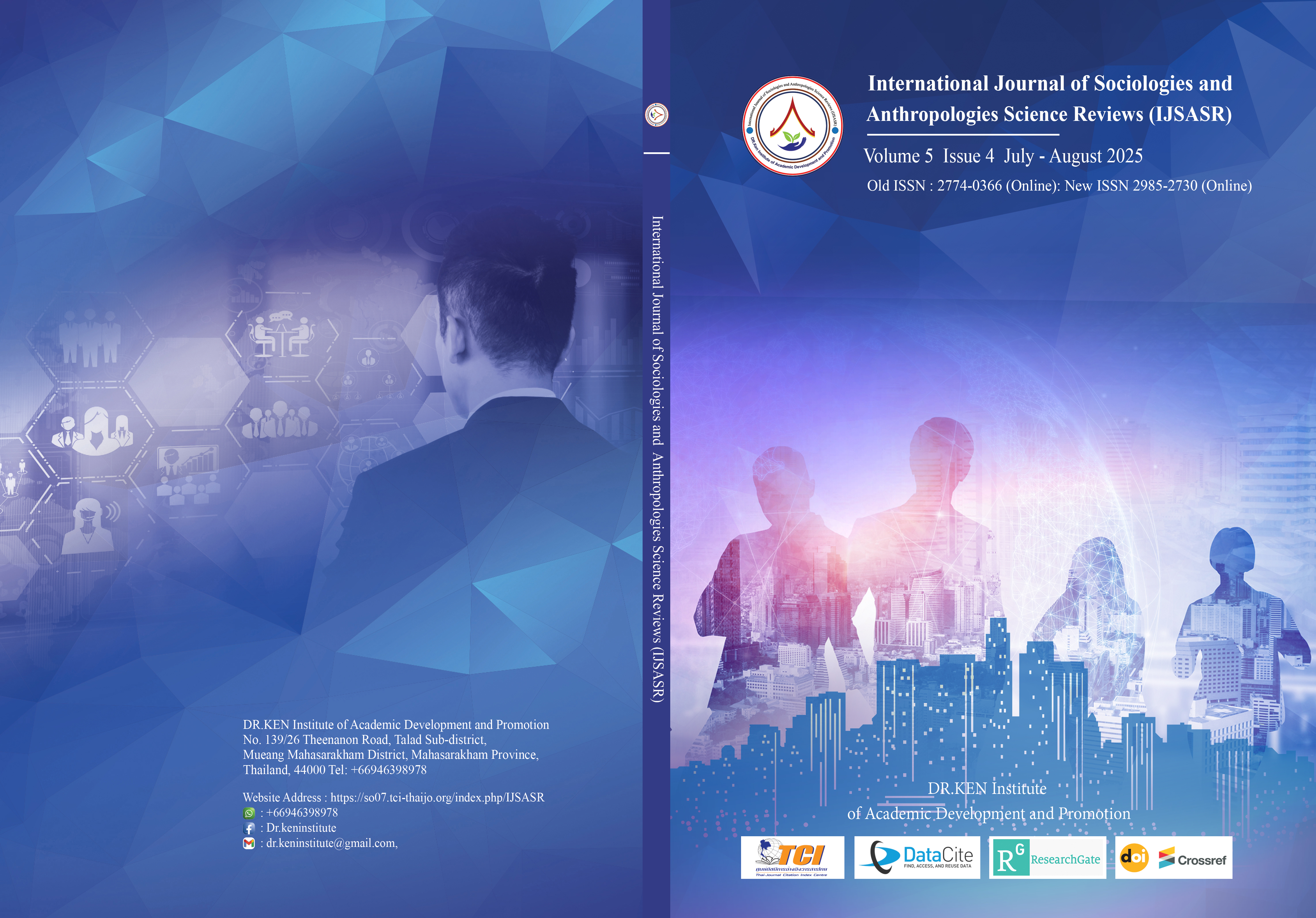Determining of Watershed Level using Geographic Information Systems. Case Study: Nam Sa Sub-basin of Bolikhamxai Province, Lao PDR.
Main Article Content
Abstract
Background and Aim: This study investigates the development and application of a watershed classification model for the Sa River Basin, which covers an area of 248.2 km² in the Lao People's Democratic Republic. It provides a critical foundation for sustainable watershed management and emphasizes the importance of data-driven, localized approaches in the planning of environmental resources.
Materials and Methods: The classification criteria include factors such as slope, Digital Elevation Model (DEM), geology, landform, soil, and forest cover. The overlay process integrates these thematic layers, utilizing spatial data analysis through Geographic Information Systems (GIS), specifically the ArcGIS software. This method combines multiple data layers to analyze and classify watershed quality effectively.
Results: resulting in six detailed basin class maps: 1A, 1B, 2, 3, 4, and 5. The use of GIS technology significantly enhanced the efficiency of this process, reflecting the advantages of modern technological advancements in environmental modeling. To evaluate the method’s effectiveness, the GIS-based approach was tested for its potential to enable efficient water and land resource management within the basin, ultimately aiming to support sustainable development.
Conclusion: The Nam Sa Sub-basin spans an area of 248.2 km² and exhibits a wide variety of watershed characteristics. These are classified into five distinct Watershed Classes (WSC): WSC 1: 23.51 km², WSC 2: 21.10 km², WSC 3: 47.59 km², WSC 4: 144.18 km², WSC 5: 11.77 km². Among these, WSC 4 is the largest, covering a substantial portion of the sub-basin. This class is characterized by particular features that exert a significant influence on water flow, sediment transport, and land-use suitability.
Article Details

This work is licensed under a Creative Commons Attribution-NonCommercial-NoDerivatives 4.0 International License.
Copyright on any article in the International Journal of Sociologies and Anthropologies Science Reviews is retained by the author(s) under the under the Creative Commons Attribution-NonCommercial-NoDerivatives 4.0 International License. Permission to use text, content, images, etc. of publication. Any user to read, download, copy, distribute, print, search, or link to the full texts of articles, crawl them for indexing, pass them as data to software, or use them for any other lawful purpose. But do not use it for commercial use or with the intent to benefit any business.

References
Adeel, Z., Hameed, S., & Raza, A. (2005). Watershed management for sustainable development. Springer.
Bierman, P. R., & Steig, E. J. (1996). Erosion and landscape evolution. Geomorphology, 14(1-2), 35-52. https://doi.org/10.1016/0169-555X(95)00120-5
Chankaew, K. (2008). Principles of watershed management. College of Environment, Kasetsart University.
Croke, J. C., Hairsine, P. B., & Fogarty, P. (2005). Erosion and sediment control in river basins. Earth Science Reviews, 72(1-2), 79-92. https://doi.org/10.1016/j.earscirev.2005.01.001
Foley, J. A., DeFries, R., Asner, G. P., Barford, C., Bonan, G., Carpenter, S. R., … & Zaks, D. P. (2005). Global consequences of land use change. Nature, 438(7068), 123-130. https://doi.org/10.1038/nature04249
Freeman, C. (1987). Technology policy and economic performance: Lessons from Japan. Printer Publishers.
Hasting, P. (1990). Principles of spatial data structures. Geographical Press.
Hudson, N.W. (1971). Soil conservation. Batsford.
Land Law. (2019). National framework for land classification and management. Government Printing Office.
Ministry of Commerce. (2011). Lao People's Democratic Republic, Ministry of Commerce and Investment Guide. Ministry.
Mitsch, W. J., & Gosselink, J. G. (2015). Wetlands (5th ed.). Wiley.
Molle, F., Wester, P., & Smakhtin, V. (2007). River basin management and water governance. Earthscan.
Natural Resource and Environmental Policy and Planning. (1996). Watershed management framework: Policies and practices. Ministry of Natural Resources and Environment.
Nixon, S. W., et al. (2010). Floodplain ecosystems and water quality. Ecological Applications, 20(2), 373-387. https://doi.org/10.1890/08-0809.1
Sivapalan, M., et al. (2003). Hydrology of river basins. Water Resources Research, 39(2), 1021. https://doi.org/10.1029/2002WR001232
Van der Wateren, J. F., & Slade, R. M. (2010). Shale and erosion. Geomorphology, 5(3), 195-208. https://doi.org/10.1016/j.geomorph.2009.06.007
Water Resources and Agricultural Information Institute. (2012). Watershed management policies and practices in Thailand. Ministry of Agriculture and Cooperatives.






